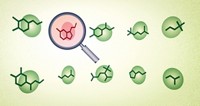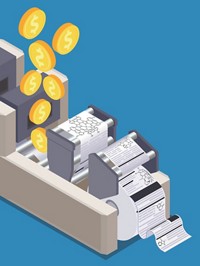Advertisement
Grab your lab coat. Let's get started
Welcome!
Welcome!
Create an account below to get 6 C&EN articles per month, receive newsletters and more - all free.
It seems this is your first time logging in online. Please enter the following information to continue.
As an ACS member you automatically get access to this site. All we need is few more details to create your reading experience.
Not you? Sign in with a different account.
Not you? Sign in with a different account.
ERROR 1
ERROR 1
ERROR 2
ERROR 2
ERROR 2
ERROR 2
ERROR 2
Password and Confirm password must match.
If you have an ACS member number, please enter it here so we can link this account to your membership. (optional)
ERROR 2
ACS values your privacy. By submitting your information, you are gaining access to C&EN and subscribing to our weekly newsletter. We use the information you provide to make your reading experience better, and we will never sell your data to third party members.
Research Integrity
New tool detects papers originating from paper mills
Scientific publishing group seeks to stanch proliferation of subpar research papers
by Dalmeet Singh Chawla, special to C&EN
April 20, 2023
| A version of this story appeared in
Volume 101, Issue 13
A new tool has been launched to detect studies that are the product of paper mills, which churn out subpar scientific papers that researchers can add their names to in exchange for a fee.
The International Association of Scientific, Technical, and Medical Publishers (STM), a trade association with more than 100 members, announced the launch on April 13. The American Chemical Society, which publishes C&EN, is an STM member.
20
Number of publishers using new tool.
The new tool is part of a wider STM project to bring scholarly publishers together to tackle research fraud.
The tool is a stand-alone web application through which publishers can upload papers submitted to their journals to detect early on if they contain indications of fraud. If a paper is generated using automated software, for instance, the tool would in theory detect and flag it.
For now, the new tool has been launched as a minimal viable product for research integrity managers at academic publishers. The plan is to expand its use to individual journal editors, says Joris van Rossum, a program director at STM.
To detect whether papers originate from paper mills, the tool hunts for potential markers of fraud, such as awkward turns of phrase and suspicious patterns in references and citations. Another marker is using translation software to plagiarize papers written in other languages.
Van Rossum declines to share specific details of what the tool searches for, noting that paper mills adapt fast and may learn to circumvent the system. “We are in a bit of an arms race, so we don’t want to give the paper mills too much information about what we’re doing,” he says.
Around 60 people from 20 scholarly publishers are already using the tool, van Rossum says. The aim is to allow publishers to share information and data about different paper mills, emerging mechanisms of fraud, and policies for tackling research integrity problems.
“Publishers are fiercely determined to work this out and shut paper mills down,” says Chris Graf, research integrity director at Springer Nature, one of the publishers involved in testing the tool’s efficacy.
“Everything we can do to avoid sending paper mill papers out for peer review reduces the burden for researchers and is a win,” Graf says, “so once we know it works, I’m most interested in using it before peer review.”




Join the conversation
Contact the reporter
Submit a Letter to the Editor for publication
Engage with us on Twitter